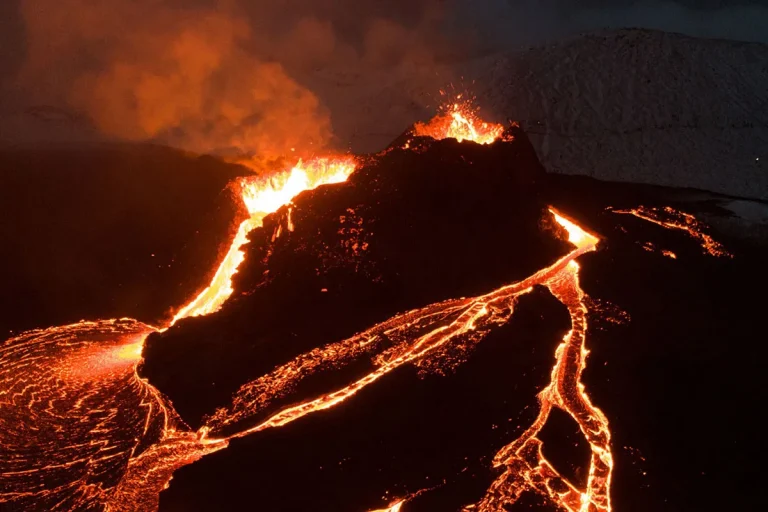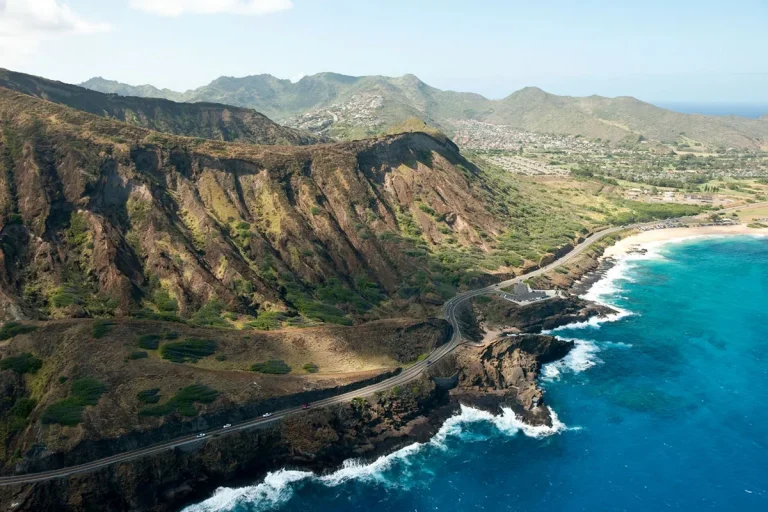Save money on your next flight
Skyscanner is the world’s leading flight search engine, helping you find the cheapest flights to destinations all over the world.
The flu is a dangerous virus that spreads easily and can cause severe illness. If you’re planning a trip to Hawaii, you may be wondering when you’re most at risk of catching the flu while visiting the islands.
If you’re short on time, here’s a quick answer to your question: The peak of Hawaii’s flu season is typically from October through March, with activity picking up in November and lasting through February. However, influenza can occur sporadically year-round in Hawaii.
In this comprehensive guide, we will cover everything you need to know about flu season in Hawaii, including the typical timing, how long it lasts, which strains are most common, why the flu spreads easily in Hawaii, how you can prevent catching the flu, and how to treat it if you do get sick.
Timing and Duration of Flu Season in Hawaii
Peak Months
In Hawaii, flu activity usually begins increasing in October or November, peaks between December and March, and starts to decline by April. The peak months typically coincide with the winter and colder months when people spend more time indoors in closer proximity.
According to the CDC, December to February are usually the months with the highest flu detection rates and most confirmed cases in Hawaii and other subtropical climates.
Year-Round Activity
While seasonal influenza peaks during the winter months, flu viruses can circulate year-round in Hawaii. Hawaii’s tropical climate enables greater influenza transmission than other temperate regions. One study found Hawaii had the longest duration of seasonal flu activity in the country, often lasting 30-52 weeks.
Even in summer months when transmission declines, around 5-10% of specimens tested positive for flu.
Ongoing global travel helps introduce new flu strains that supplement endemic strains. With tourists arriving from all over the world, Hawaii serves as a mixing bowl for influenza viruses that then spread to local communities. This explains why flu season seems nearly uninterrupted in the islands.
Regional Differences
Flu patterns may show regional variations across the major Hawaiian islands. For example, the east side of islands tends to be slightly cooler and wetter during winter months which could intensify flu activity. Meanwhile, drier leeward areas remain hot and experience less of a seasonal effect.
| Island | Peak Months | Duration |
|---|---|---|
| Oahu | Jan-Mar | 30-40 weeks |
| Hawaii (Big Island) | Nov-Feb | 40-52 weeks |
As seen above, the Big Island tends to have a longer flu season, potentially due to regional microclimates and exposure from international travelers arriving first at airports in Hilo and Kona.
Common Strains of Flu in Hawaii
Influenza A Strains
Influenza A viruses are constantly changing and two main strains typically circulate each flu season in Hawaii: H3N2 and H1N1. The H3N2 strain has been around since 1968 and tends to affect older adults more severely.
The H1N1 strain emerged in 2009 causing a pandemic before becoming a regular seasonal flu virus. According to the Hawaii Department of Health, H3N2 was the predominant strain during the 2022-2023 flu season in Hawaii, accounting for over 75% of confirmed cases.
Influenza B Strains
Influenza B strains tend to affect children more than adults. There are two main circulating lineages: B/Victoria and B/Yamagata. The B/Victoria lineage was the second most common strain in Hawaii during the 2022-2023 season.
Influenza B strains mutate more slowly than Influenza A strains and tend to cause less severe illness. However, both influenza A and B strains can lead to hospitalization and death in vulnerable groups like young children and the elderly.
How Strains Are Tracked
The Hawaii Department of Health collaborates with the CDC to conduct virologic surveillance in order to identify circulating strains each season. This involves collecting respiratory specimens from patients with influenza-like illness and testing them in a lab to determine the type, subtype, and strain.
Results are reported weekly in Hawaii’s influenza Activity and Surveillance Report.
Virologic data provides critical information about genetic changes in influenza viruses. By understanding the strains predicted to circulate in the upcoming season, health officials can strategically select strains for the annual flu vaccine to provide optimal protection against illness.
The dominant H3N2 subtype during 2022-2023 was a variant strain related to A/Darwin/6/2021. Fortunately, this strain was included in the 2022-2023 flu shot, allowing it to provide good protection.
Ongoing surveillance also detects if any new “novel” flu strains emerge with pandemic potential. This data guides planning decisions regarding vaccine composition, antiviral medication use, and public health response measures.
Why Flu Spreads Easily in Hawaii
Imported Cases Via Travelers
As an isolated island state, Hawaii receives over 10 million visitors per year from around the world. This heavy influx of travelers greatly increases the chance of imported flu cases during flu season.
According to the Hawaii Department of Health, over 70% of confirmed flu cases in Hawaii originate from outside the islands. With thousands arriving daily from international destinations, it’s no wonder the flu takes hold here.
Ideal Climate Conditions
Hawaii’s tropical climate provides ideal conditions for the flu virus to thrive. The islands enjoy warm temperatures year-round, with an average high of 85°F. Additionally, humidity levels rarely dip below 60% even during Hawaii’s “dry” season.
These tropical conditions allow the flu virus to remain viable for longer periods compared to drier mainland climates. According to a CDC study, the flu virus survives longer at relative humidity levels above 40%.
Therefore, Hawaii’s consistently high humidity gives the virus better chances of spreading between people.
High Population Density
Although Hawaii is geographically isolated, certain areas see extremely high population densities. Honolulu County tops the nation with over 1,800 residents per square mile. This concentration of people living and working in close proximity enables the flu virus to spread rapidly once cases are introduced.
Additionally, over 9 million tourists flock yearly to Oahu in particular. Containing an outbreak becomes exponentially more difficult with such a high influx of transient visitors. Simply put, Hawaii’s unique combination of dense population centers and heavy tourism creates optimal conditions for flu transmission.
How to Prevent Catching the Flu in Hawaii
Get a Flu Shot
The best way to avoid coming down with influenza in Hawaii is to get an annual flu vaccination. The CDC recommends that everyone 6 months and older get a flu shot each year, ideally before the start of flu season from October to May in the islands.
The vaccine protects against the main circulating strains expected in a given year. Visit your doctor, pharmacy, or health department to get your shot.
Practice Good Hygiene
Practicing good hand hygiene can greatly reduce your chances of catching or spreading the flu virus in the Aloha State. Make sure to wash your hands frequently with soap and warm water for at least 20 seconds, especially after coughing or sneezing.
When soap and water isn’t available, use an alcohol-based hand sanitizer containing at least 60% alcohol.
Avoid Contact With Sick People
The influenza virus mainly spreads from person to person through droplets when someone coughs or sneezes. When flu activity is high, avoid close contact with anyone showing symptoms. And if you get sick, limit contact with others as much as possible to keep from infecting them.
Try to stay home from school or work until the fever has been gone for at least 24 hours.
Disinfect High-Touch Surfaces
Flu viruses can live on hard surfaces like countertops and doorknobs for up to 48 hours. Be diligent about cleaning and disinfecting frequently touched objects and surfaces to kill any lingering germs. Use household disinfectants or EPA-registered antimicrobial products according to label directions.
Remember to clean things like phones, remotes, handles, light switches, and bathroom fixtures.
Monitor Your Health When Traveling
People traveling to Hawaii from other states or countries may transmit new or different flu strains to the islands. And since the flu season arrives at different times around the world, you could catch the virus while vacationing in popular visitor destinations.
Check the CDC Travelers’ Health website and see a doctor immediately if you experience fever, cough, sore throat, or other flu symptoms after returning home.
Treating the Flu if You Get Sick in Hawaii
Antiviral Medications
If you come down with the flu while visiting Hawaii, it’s important to see a doctor right away. They may prescribe antiviral medications like Tamiflu or Relenza to help shorten the duration of your illness and reduce complications (CDC).
These work best if started early on, within the first 48 hours of getting sick. Most people see symptom relief taking antivirals for 5 days. Without insurance, the medication can cost over $100 so check drug prices beforehand.
Over-the-Counter Medicines
You can also find many over-the-counter flu medicines at local Hawaii pharmacies and convenience stores to help manage your symptoms. Acetaminophen/Tylenol helps reduce fever and muscle aches. Ibuprofen/Advil is another anti-inflammatory option.
Decongestants like Sudafed relieve congestion while cough syrups can calm severe coughing. Combination medicines have ingredients to combat several flu symptoms in one pill which can be convenient. Be sure to carefully follow dosage directions.
Home Remedies for Symptom Relief
There are also various home remedies that can ease flu discomfort without medicine:
- Drinking lots of fluids like water, broths, sports drinks
- Getting extra rest and relaxation
- Using humidifiers for cough relief
- Taking steamy showers to clear nasal and lung congestion
- Gargling salt water for sore throats
- Applying essential oils topically for muscle/headache pain
Seeing a Doctor
Most visitors rely on over-the-counter medicines to recover from the flu while in Hawaii. But it’s recommended to get medical attention if your fever exceeds 102°F or if symptoms like difficulty breathing, dehydration, and severe pain or vomiting arise.
Hawaii has clinics across islands that treat the flu and take visitor insurance. Seeing a local doctor also ensures you get any needed anti-virals in the 48 hour effective window (CDC).
Flu Complications to Watch For
Rarely, the flu causes dangerous complications needing emergency care:
| Pneumonia infections | Can develop into respiratory failure and sepsis |
| Sinus and ear infections | Cause severe headaches and pressure pain |
| Heart problems | Strain rate/rhythm leading to heart attacks |
Call 911 immediately if you experience any severe symptoms like high fever with stiff neck/vomiting, trouble breathing/chest pain, purple rashes spreading, sudden dizziness/confusion, or fainting. Hawaii’s hospitals are well equipped to rapidly diagnose and treat critical flu complications.
Over 2000 state residents required hospitalization during the last heavy 2022-2023 flu season (Hawaii Health).
Conclusion
We hope this guide has helped answer your question about when flu season occurs in Hawaii. To recap, influenza activity typically starts picking up in November, peaks between December and February, and winds down in March. However, sporadic cases can occur year-round across the islands.
By getting vaccinated, washing your hands frequently, avoiding sick people, and being prepared with over-the-counter remedies, you can enjoy your Hawaiian vacation while minimizing your chances of catching the flu.
If you do get sick, seek medical care promptly, use antivirals if prescribed, and monitor closely for any severe symptoms.
Understanding the timing and duration of influenza season in this tropical destination will help you take precautions and make plans accordingly. With the right prevention and some basic preparedness, you can avoid the flu putting a damper on your island getaway.






